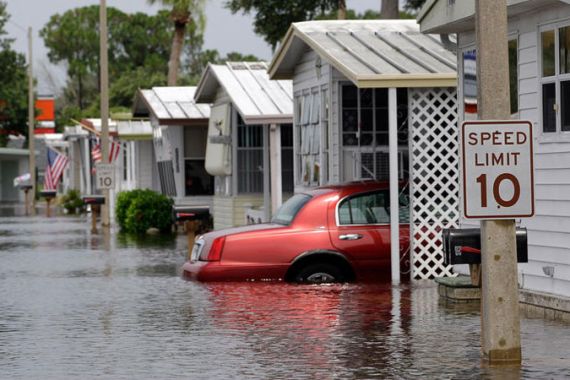Ernesto picks up the pace
After a lull in the 2012 Atlantic hurricane season, there are signs of activity picking up.

 Satellite image of Tropical Storm Ernesto as it developed in the eastern Caribbean Sea. [AP]
Satellite image of Tropical Storm Ernesto as it developed in the eastern Caribbean Sea. [AP]
It has been a strange 2012 Atlantic hurricane season. Compare it to an Olympic athlete who gets off to a flier in a race and then slows after realizing they have gone off too fast. The question is, will they blow up or will they pick up the pace for a burst towards the finishing line?
The hurricane season begins officially on 1 June, but the atmosphere seems to have ignored the calendar, with Tropical Storm Alberto forming on the 19 May.
Keep reading
list of 4 items‘Mama we’re dying’: Only able to hear her kids in Gaza in their final days
Europe pledges to boost aid to Sudan on unwelcome war anniversary
Birth, death, escape: Three women’s struggle through Sudan’s war
Just over a week later Beryl formed and when it arrived onshore at Jacksonville Beach, Florida it became the strongest landfall of any pre-season Atlantic tropical cyclone on record.
Chris became the first hurricane of the season and it was third earliest third tropical cyclone, after 1887 and 1959.
Tropical Storm Debby, which developed on 23 June, was the earliest fourth storm on record – and there was still another week of June to go. But then…nothing.
Not a single cyclone formed during the month of July. This hiatus may seem strange but it is a surprisingly common occurrence during the month of July.
A similar thing happened as recently as 2009 and since records began in 1851 there has been an astonishing 88 occasions on which no July storms have been reported.
This is believed to be a result of variable sea temperatures and unfavourable winds through the atmosphere.
The formation of Tropical Storm Ernesto is a reminder that the season still has a way to go before it reaches its traditional peak in September.
Since 1851, more than 65% of all hurricanes formed after 1 September.
So there is plenty of time for activity to pick up and deliver the 14 named storms predicted by Colorado State University’s tropical storm forecasting team.
They expect six of these storms to become hurricanes, two of which will be major hurricanes.
What may prove to be the ‘fly in the ointment’ of these predictions is the development of El Nino, the periodic warming of water in the eastern equatorial Pacific. This tends to inhibit storm development and there are signs of a weak El Nino now beginning to develop.
As for the current Storm, Ernesto, it is expected to bring heavy rain across coastal Honduras before it develops into a hurricane just before making landfall close to the border between Belize and Mexico’s Yucatan Peninsula. This region can expect to see around 200mm of rainfall which is likely to result in landslides and flash flooding.
Ernesto will then weaken before drifting into the Bahia de Campeche.